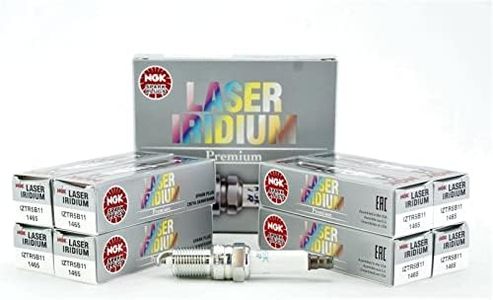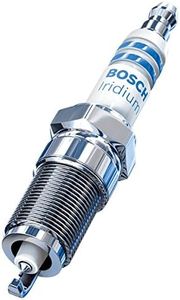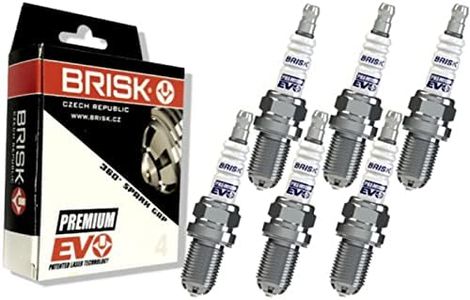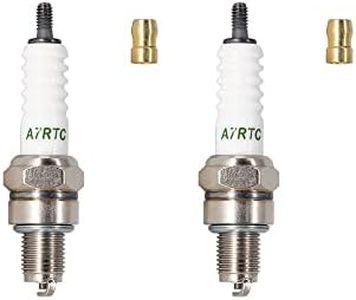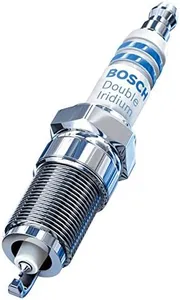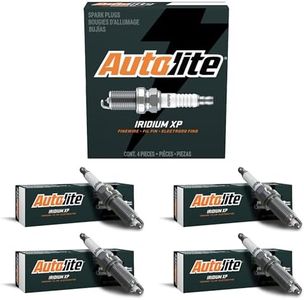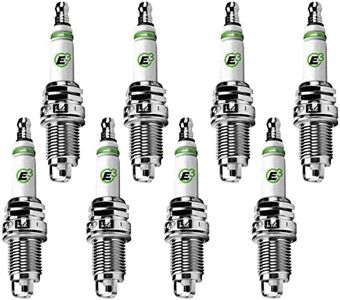We Use CookiesWe use cookies to enhance the security, performance,
functionality and for analytical and promotional activities. By continuing to browse this site you
are agreeing to our privacy policy
10 Best Performance Spark Plugs
From leading brands and best sellers available on the web.By clicking on a link to a third party's website, log data is shared with that third party.
Buying Guide for the Best Performance Spark Plugs
Choosing the right performance spark plugs can make a noticeable difference in how your vehicle starts, runs, and even how efficiently it uses fuel. While all spark plugs perform the basic function of igniting the fuel-air mixture inside your engine, performance spark plugs are designed to offer better ignition, improved efficiency, and longer life. When picking spark plugs, it's important to focus on key specifications related to compatibility, durability, and performance benefits that match your driving style and vehicle requirements.Heat RangeThe heat range of a spark plug refers to how well the plug can dissipate heat from the tip into the engine cooling system. It’s crucial because a plug that's too hot can cause pre-ignition or engine knocking, while one that’s too cold might foul up quickly and not combust properly. Heat ranges are usually numbered, with lower numbers being 'hotter' and higher numbers being 'colder'. For everyday driving, you want a heat range that matches your manufacturer’s recommendation. If your engine is upgraded for higher performance or if you drive aggressively, you might need a colder plug to handle increased combustion temperatures without problems.
Electrode MaterialThe electrode is the part of the plug that sparks to ignite your fuel. Materials commonly used include copper, platinum, and iridium. Copper electrodes offer strong performance and are often preferred for older or high-performance engines but need replacing more often. Platinum and iridium last much longer and offer a cleaner, more consistent spark, which can help with efficiency and longevity. If you want longer-lasting plugs with low maintenance, go iridium. If you tune your engine or run it hard and don’t mind frequent changes, copper could serve best.
Gap SizeThe gap is the small space between the center and side electrode, and this is where the spark jumps to ignite the mixture. The correct gap size is vital because too large a gap may make starting harder or cause misfires, while too small a gap can weaken the spark. Your vehicle’s manual will list a recommended gap, and you should always match this unless your car is specially tuned. Performance plugs sometimes have their own recommended gap, so make sure to check and adjust as needed.
Thread Reach and DiameterThread reach and diameter refer to the size and length of the threaded part of the spark plug that screws into your engine. These need to precisely match your engine design to ensure proper seating and function. Using the wrong thread size or reach can damage your engine or cause poor performance. Always select plugs with the same thread diameter and reach as specified for your engine. This is about engine compatibility, not performance tuning.
Resistor or Non-resistorSome spark plugs have built-in resistors to reduce electrical interference with your car's electronics, such as radios or sensors. Most modern vehicles and high-performance vehicles require resistor plugs for smoother operation, while non-resistor plugs were more common in older or racing applications. Unless your vehicle specifically requires non-resistor types—usually for certain types of racing or vintage engines—go with resistor plugs for everyday or street performance use.
Number of Ground ElectrodesSome performance spark plugs have more than one ground electrode, claiming improved ignition and durability. In practice, single-ground plugs are more than adequate for most users, but multiple-ground designs can offer improved longevity in engines prone to quick plug wear. Choose standard single-ground electrode plugs unless your engine’s design or your specific use (like extreme endurance driving) could benefit from the added durability.
